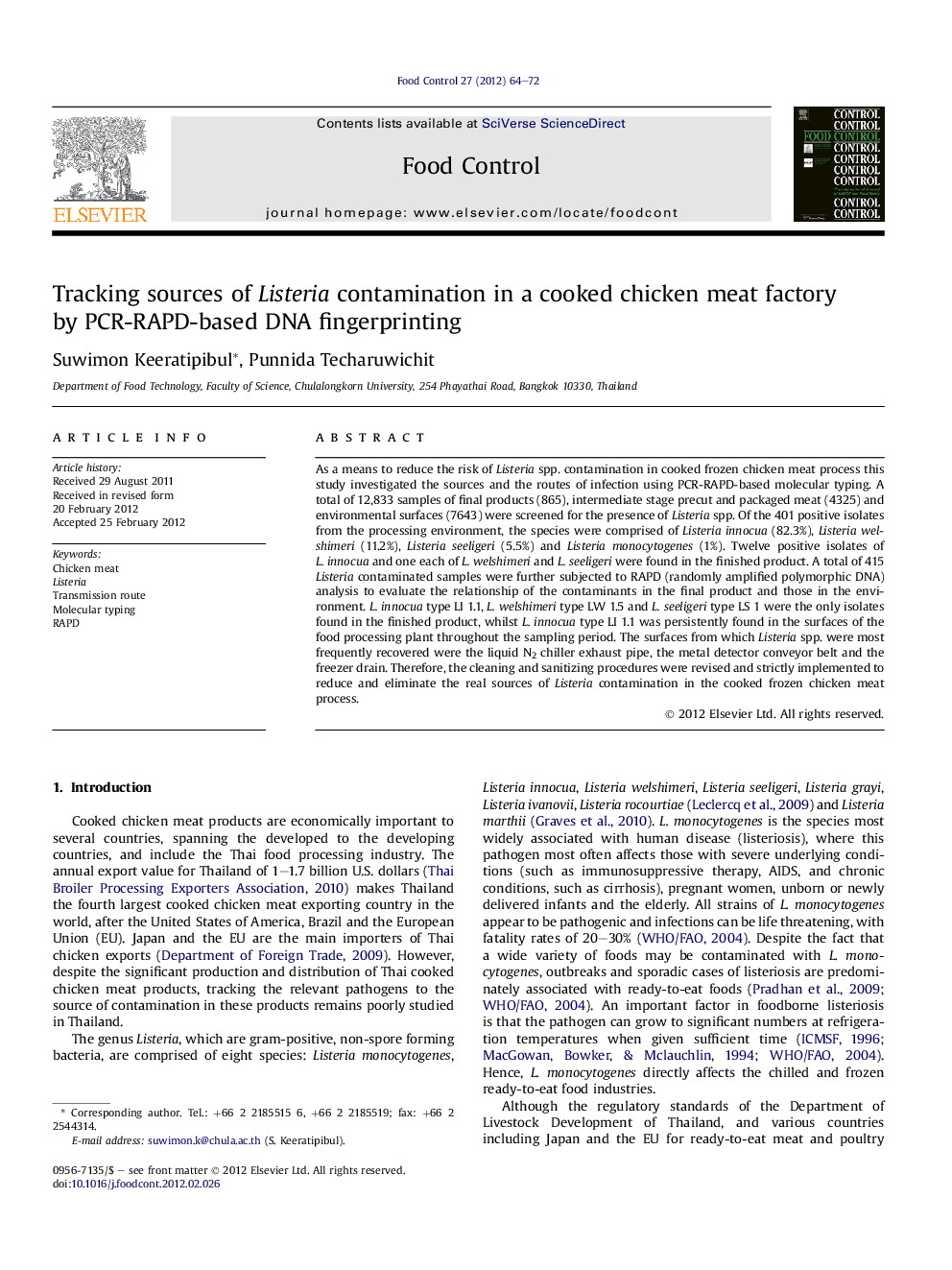| Article ID | Journal | Published Year | Pages | File Type |
|---|---|---|---|---|
| 4559608 | Food Control | 2012 | 9 Pages |
As a means to reduce the risk of Listeria spp. contamination in cooked frozen chicken meat process this study investigated the sources and the routes of infection using PCR-RAPD-based molecular typing. A total of 12,833 samples of final products (865), intermediate stage precut and packaged meat (4325) and environmental surfaces (7643) were screened for the presence of Listeria spp. Of the 401 positive isolates from the processing environment, the species were comprised of Listeria innocua (82.3%), Listeria welshimeri (11.2%), Listeria seeligeri (5.5%) and Listeria monocytogenes (1%). Twelve positive isolates of L. innocua and one each of L. welshimeri and L. seeligeri were found in the finished product. A total of 415 Listeria contaminated samples were further subjected to RAPD (randomly amplified polymorphic DNA) analysis to evaluate the relationship of the contaminants in the final product and those in the environment. L. innocua type LI 1.1, L. welshimeri type LW 1.5 and L. seeligeri type LS 1 were the only isolates found in the finished product, whilst L. innocua type LI 1.1 was persistently found in the surfaces of the food processing plant throughout the sampling period. The surfaces from which Listeria spp. were most frequently recovered were the liquid N2 chiller exhaust pipe, the metal detector conveyor belt and the freezer drain. Therefore, the cleaning and sanitizing procedures were revised and strictly implemented to reduce and eliminate the real sources of Listeria contamination in the cooked frozen chicken meat process.
► We track the transmission routes of Listeria in chicken meat processing plant. ► We use DNA fingerprinting method to identify Listeria in product and environment. ► Persistent Listeria in non-product contact surface can cause product contamination. ► Strong and prompt action should be taken following the isolation of any Listeria spp. ► Sanitary equipment and plant design are crucial for controlling the contamination.
